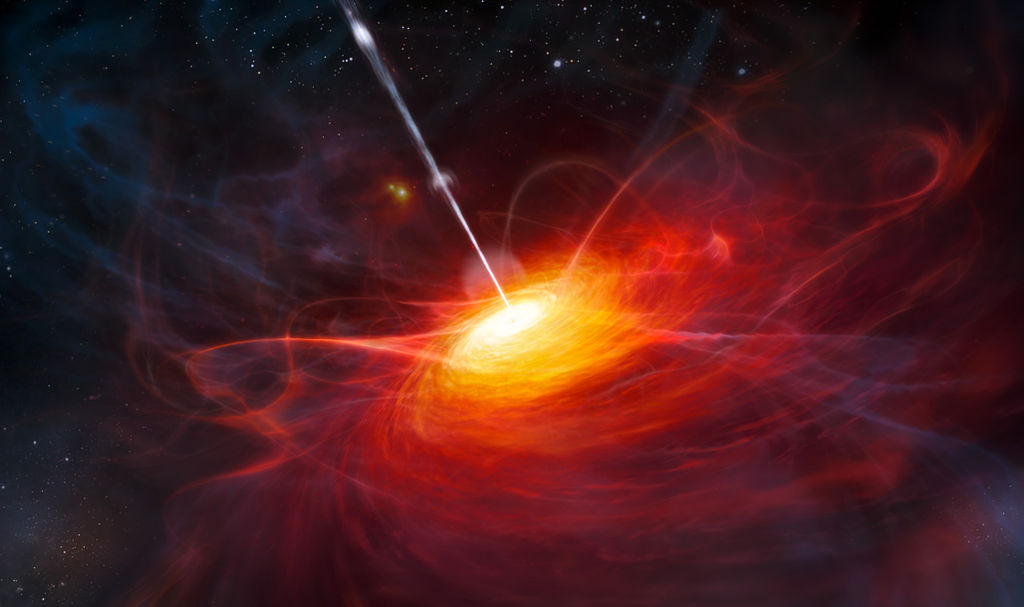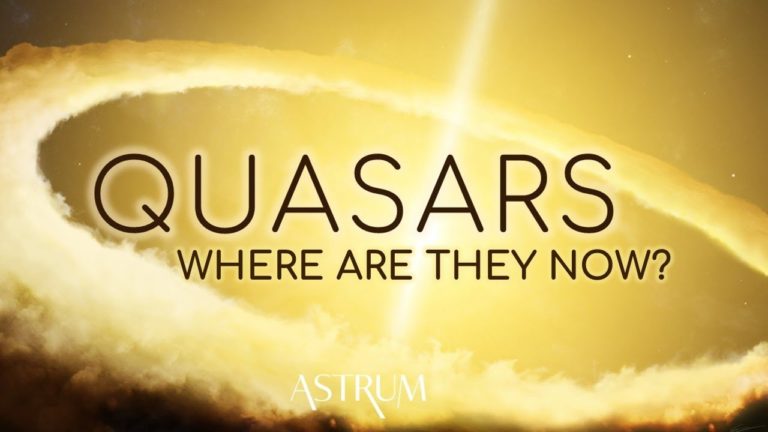The Age of Quasars Is Coming to an End
What Is Quasars ?

A quasar (/ˈkweɪzɑːr/; also known as a quasi-stellar object, abbreviated QSO) is an extremely luminous active galactic nucleus (AGN), in which a supermassive black hole with mass ranging from millions to tens of billions of times the mass of the Sun is surrounded by a gaseous accretion disk. As gas in the disk falls towards the black hole, energy is released in the form of electromagnetic radiation, which can be observed across the electromagnetic spectrum. The radiant energy of quasars is enormous; the most powerful quasars have luminosities thousands of times greater than a galaxy such as the Milky Way. Usually, quasars are categorized as a subclass of the more general category of AGN. The redshifts of quasars are of cosmological origin.
The term quasar originated as a contraction of “quasi-stellar [star-like] radio source” – because quasars were first identified during the 1950s as sources of radio-wave emission of unknown physical origin – and when identified in photographic images at visible wavelengths, they resembled faint, star-like points of light. High-resolution images of quasars, particularly from the Hubble Space Telescope, have demonstrated that quasars occur in the centers of galaxies, and that some host galaxies are strongly interacting or merging galaxies. As with other categories of AGN, the observed properties of a quasar depend on many factors, including the mass of the black hole, the rate of gas accretion, the orientation of the accretion disk relative to the observer, the presence or absence of a jet, and the degree of obscuration by gas and dust within the host galaxy.
More than a million quasars have been found, with the nearest known being about 600 million light-years away from Earth. The record for the most distant known quasar keeps changing. In 2017, the quasar ULAS J1342+0928 was detected at redshift z = 7.54. Light observed from this 800 million solar mass quasar was emitted when the universe was only 690 million years old. In 2020, the quasar Pōniuāʻena was detected from a time only 700 million years after the Big Bang, and with an estimated mass of 1.5 billion times the mass of our Sun. In early 2021, the quasar J0313-1806, with a 1.6 billion solar-mass black hole, was reported at z = 7.64, 670 million years after the Big Bang. In March 2021, PSO J172.3556+18.7734 was detected and has since been called the most distant known radio-loud quasar discovered
Quasar discovery surveys have demonstrated that quasar activity was more common in the distant past; the peak epoch was approximately 10 billion years ago. Concentrations of multiple, gravitationally-attracted quasars are known as large quasar groups and constitute some of the largest known structures in the universe.
Supermassive black holes and their distribution in the universe.
Do not forget to share your opinion with us to provide you with the best posts !




0 Comments